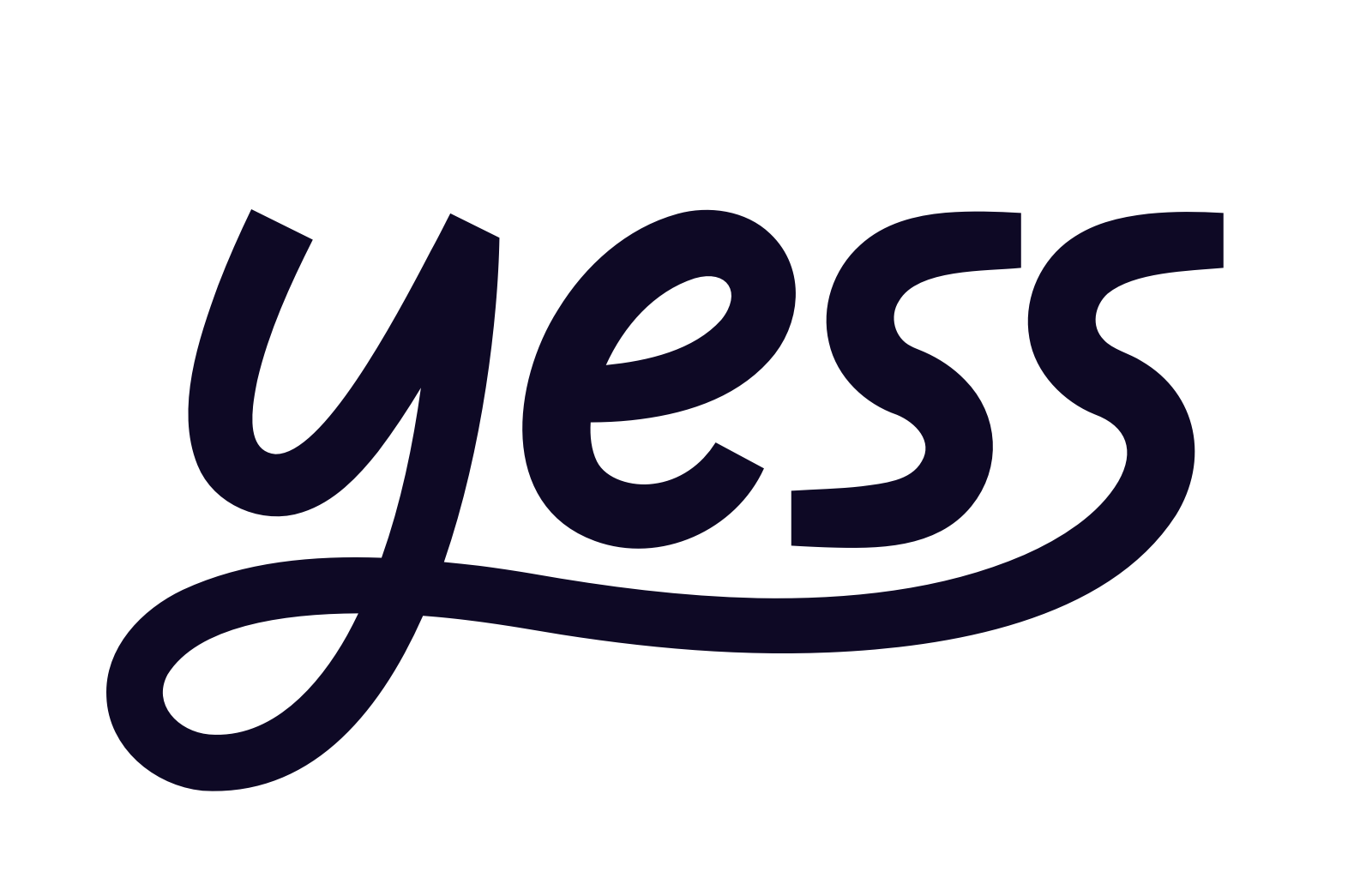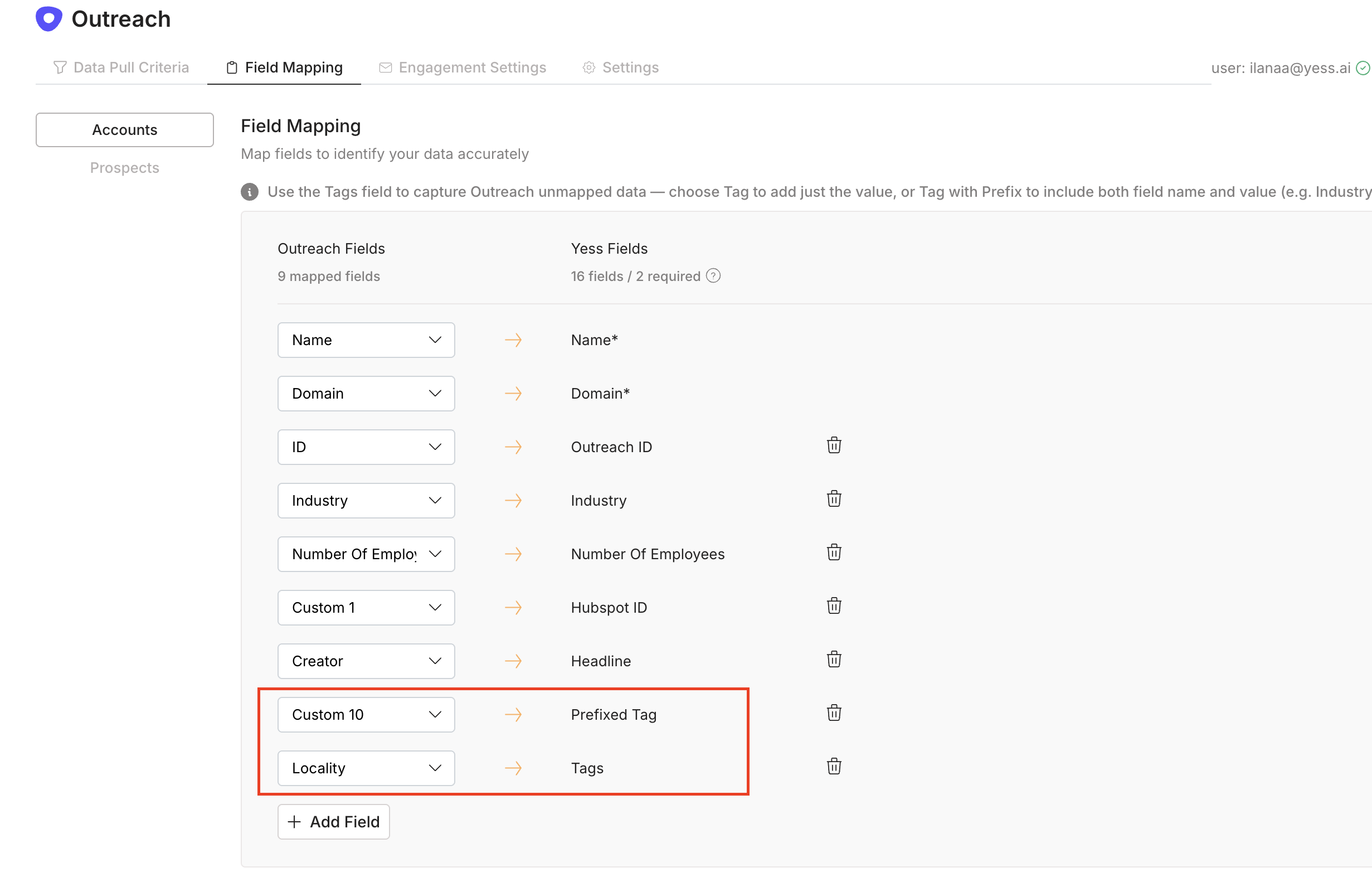How It Works
- Tracking: Yess monitors your Outreach sequences and identifies steps requiring LinkedIn actions (like connection requests and messages).
- Automation: When a lead reaches a LinkedIn step, Yess automatically executes the action for you.
- Sync: All relevant lead and account data is synced and mapped to Yess objects for unified tracking.
- Logging: Each LinkedIn activity performed by Yess is automatically logged in Outreach.
Step 1: Authenticate with Outreach
Go to the Integrations page in your Yess admin settings.- Click “Connect” next to Outreach.
- Log in with your Outreach credentials and authorize access.
- Once connected, Yess will begin syncing your sequences and leads.
Step 2: Enable LinkedIn Automation
- In the Data Pull Criteria tab, select LinkedIn Automation.
- Specify which Outreach sequences should have LinkedIn steps automated.
- Choose from a sequences list or by using a tag
To use tags, first create the tag in Outreach and assign it to your relevent sequences. You can update the tag at any time, and Yess will include all sequences with that tag in the automation.
- Set Schedule
- Configure when your data syncs automatically between Salesforce and Yess
-
Toggle “Schedule”: This switch enables or disables the automatic scheduling.
- If it’s turned on, the integration will run on a recurring basis.
- If it’s off, the process won’t run on a schedule (you may trigger it manually instead).
-
Choose how often the integration runs by setting a number and a time unit—for example, “Run every 1 day” means the integration will run once a day.
Save your selected schedule by clicking the Checkmark icon
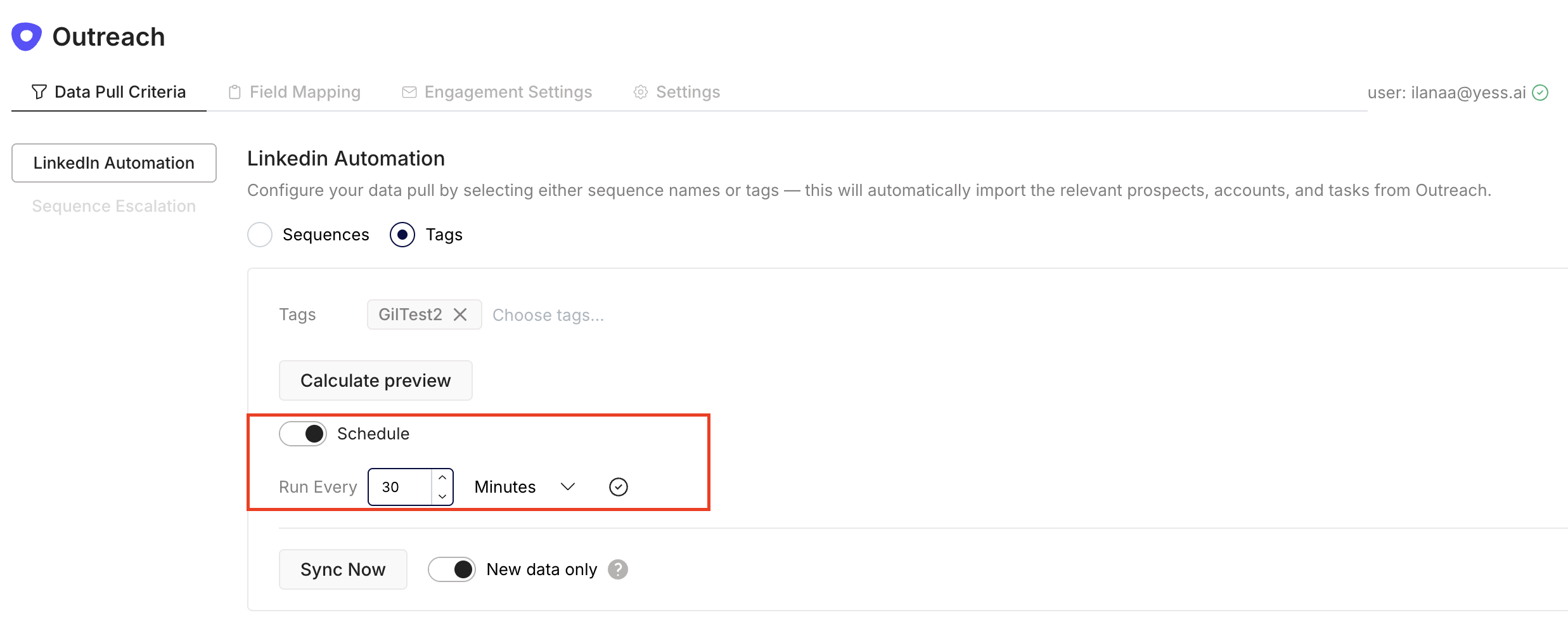
-
Toggle “Schedule”: This switch enables or disables the automatic scheduling.
- If you need to sync outside of the regular schedule, you can trigger it manually:
- Sync Now: Click Sync Now to immediately sync your data based on the current sync criteria.
- New Data Only: Enable the New Data Only toggle to pull only records that were created or updated since the last sync.(If disabled, the system will perform a full sync based on the selected filters.)
Step 3: Field Mapping
Once you’ve defined your data sync, move to the Field Mapping tab.- Map Outreach accounts and prospects to the corresponding Yess objects.
- Ensure that all data points are correctly aligned for seamless integration and escalation flow.
Step 4: Engagement Settings
Fallback per Engagement Type
When using Outreach’s LinkedIn automation through Yess, it’s important to ensure that every engagement step has valid content. To prevent automation from failing, Yess provides a content fallback mechanism that automatically fills in message content when needed.Why Is Content Fallback Needed?LinkedIn automation steps rely on having content that is both present and valid. Sometimes, a step may not have any content defined, or it may include variables that are missing or invalid .In these cases, instead of letting the step fail, Yess uses a fallback template so the message can still be sent smoothly.
- Connection Request
- Linkedin Message
-
InMail
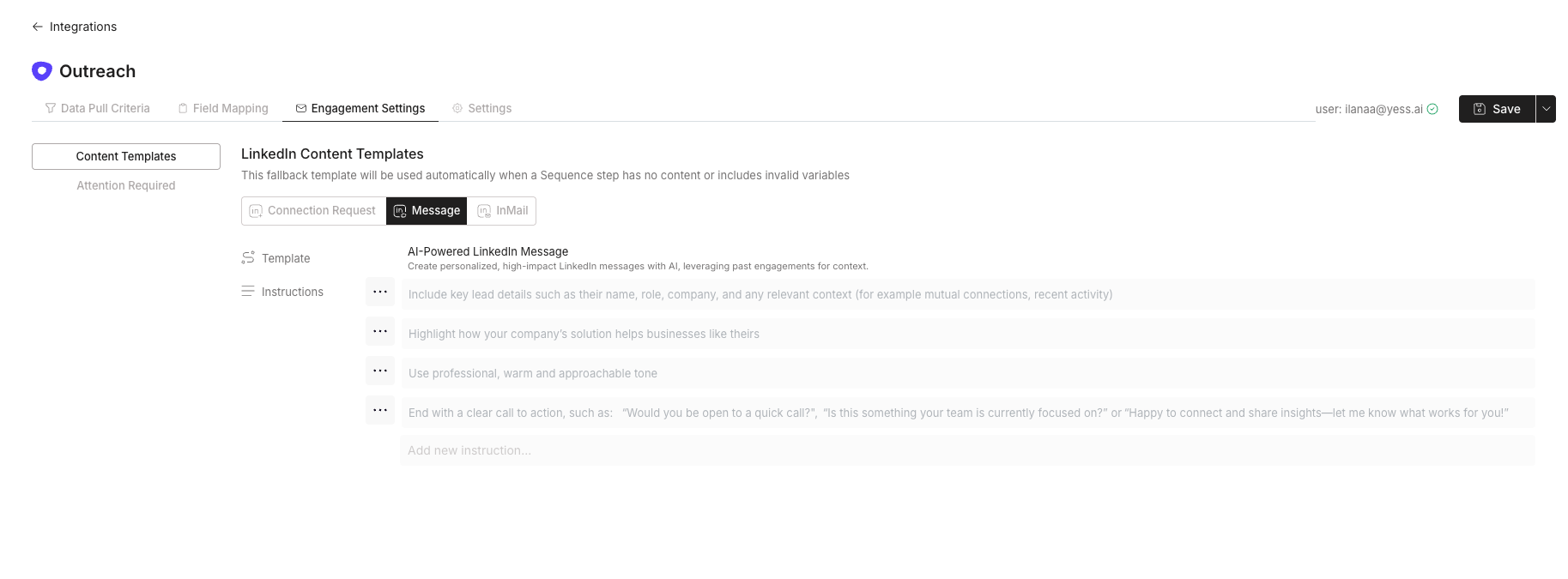
Fallback templates cannot currently be edited. If you’d like to make changes, please go to the Templates → Content page in Yess and create a new template that can be used based on engagement type.
**Attention Required Settings **
This setting controls how the system handles errors or issues during sequence steps that require user attention — such as missing data or invalid configurations. You can choose between two modes:- Skip – Set by default. The sequence will automatically skip any step that encounters an issue, and no notification will be shown.
-
Block – The sequence will pause at the step with an issue and trigger an “Attention Required” notification so the user can take action. For a detailed explanation of how these notifications work, see the Outreach Integration Error Handling documentation.
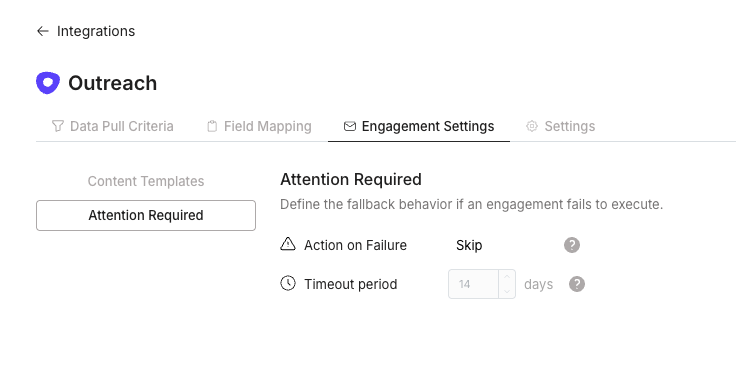
Step 5: Additional Settings (Optional)
Fine-tune your integration for your needs:- API Limit Settings:
- Set the maximum number of API calls per day, with adjustable intervals (daily, monthly, yearly).
- Default is 1,000 calls per day, but you can adjust or disable this as needed.
Saving Your Configuration
- Click Save in the upper right corner after completing all setup steps.
Related Articles
Discover what the integration looks like in action, with step-by-step examples and usage tips. Learn how Yess alerts you to issues, how to manage notifications, and what to do when something needs your attention.- Setting Up Outreach Escalation Sequences Looking for a different type of integration? Check out our guide on configuring Outreach escalation sequences in Yess.
